August 2022 Newsletter
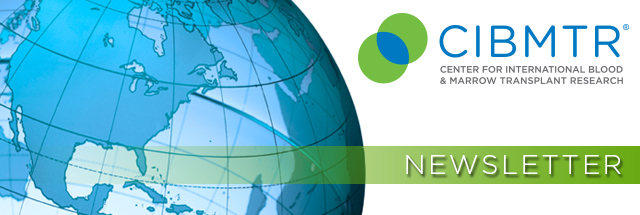
Volume 28, Issue 3
Table of Contents:
-
Perspectives
-
Immunobiology Working Committee
-
Graft Sources and Manipulation Working Committee
-
BMT CTN COVID Vaccination Study Accrual Completed!
-
New Website and Updated Logo for BMT CTN
-
Current HLA Typing Practices
-
PRO Data Update
-
Share Your Research
-
Publicly Available Datasets
-
Our Supporters
-
Abbreviations
Perspectives: Coming of Age
By John Wingard, MD
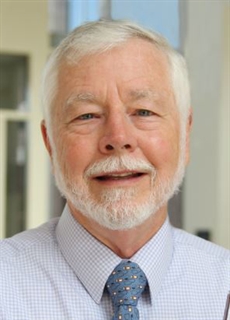
In the year 2001, we were so young, and life was so different. We accessed the internet by 56k dialups. 2000 was the world cultural year. We used a clock radio to wake up in the morning. Remember the flip phone? No social media to clutter our consciousness. The news was read on printed paper. We relied on paper maps to get places.
That was also the year the BMT CTN was hatched. Established in October 2001, the BMT CTN celebrated its 20-year anniversary at its June 2022 steering committee meeting. Yes, a little late, but better late than never. The formation of the network did not just happen. It was a process extending years back. Like many things, the transplant field was very different back then.
During the formative years of BMT, there was an enormous surge of innovation and creativity by a few intrepid pioneers, who were driven by a vision tempered by sober hope that the many obstacles could be overcome. They summoned fortitude and great enthusiasm and were not dissuaded by the many skeptics who believed the field would never become anything of value. Those pioneers required enormous resilience to press on in the face of so many early failures. Yet there were also some remarkable successes. Interest grew, and the few pioneers were joined by a generation of stalwart "settlers," determined to not only continue this innovation but also consolidate gains by opening new centers, building teams, and developing processes to refine and codify these innovations, jettisoning those practices that were not helpful, creating new organizations, making continued progress, and generating yet more innovations.
Any history is certainly personal, but I recall that in the US there were a handful of major centers that were extraordinarily creative and fiercely competitive, each with a strongly held opinion that their own homebrew of practices was the best, and each led by iconoclastic leaders. This insular culture was perfect for the time, encouraging the rapid innovation needed for a nascent field. However, this culture also had its limitations, since it was not clear if one practice was truly more effective than another. The year 1990 was a watershed time for our field when E. Donnall Thomas, MD, won the Nobel Prize.
Unfortunately, most randomized trials that established standards of practice were being done outside of the US, because clinical trial networks were better organized elsewhere. Closer to home, the NCI cooperative groups were not particularly interested in transplant trials. The US was lagging behind other countries in doing trials that were setting the standards of transplant practice. For the field to further mature, we would need to not only continue to support innovation by individual centers, but we would also need to come together to conduct large trials to address scientific questions that could only be addressed quickly by large comparative trials.
In 2000, in Anaheim outside the gates to Disney's Magic Kingdom (I am sure there is symbolism to that), a State of the Science meeting was held to provide the NIH with a vision of the unmet need and to describe a research agenda of what we would do if the NIH decided to support the formation of a BMT clinical trials network. Sadly, the summaries and recommendations were never published (an inauspicious start), but importantly, the NHLBI and NCI listened, saw merit, and decided to issue competitive requests for application to fund a network. Competitive awards for a data coordinating center and a dozen core transplant centers were granted, and a steering committee was formed. Now 20 years later, more than 50 clinical studies have been launched at > 125 sites with > 15,500 patients enrolled, > 520,000 biospecimens collected, and > 130 papers published (as of April 18, 2022). This initiative has led to more patients being cured, and is truly Improving the care of and outcomes for patients needing transplantation and other cellular therapies. An extraordinary success story!
As its first steering committee chair, I confess I was skeptical that we could pull this off. We did not have a culture of cooperation. As I looked around the steering committee table, there were very accomplished investigators who held strong convictions about what was really important and how to do things. I asked myself, would this group be able to agree on anything and pull together? What was needed to be successful was a strong conviction that this initiative was important, a willingness to compromise, and a commitment to get the work done. Happily, my skepticism was not realized.
Sometimes, it is hard to identify the magic ingredients that make things work, but time has proved that we had the right stuff. Certainly, the energy, calm and confident temperament, and steadfast leadership of Mary Horowitz, MD, MS, the CIBMTR's Chief Scientific Director at the time, was a key ingredient. Shared ownership by the transplant principal investigators was also crucial: We agreed to rotate steering committee chairs among ourselves, and each chair took their responsibilities seriously to face head-on the various challenges over the years—and there were many. Certainly, the able and steadfast support provided by the NIH program officers was also key.
During our 20-year celebration, members of the steering committee shared reflections on what this journey has meant to our field. Several mentioned the special nature of the collegial culture that has characterized our group from its inception. Certainly, without this culture of collaboration, no progress would have been possible. This culture is also evident in the other key organizations in our field: ASTCT, FACT, CIBMTR, and NMDP as well. I suspect that the collaborative culture we created is the secret sauce that has fueled our progress.
Several members also noted the network's early emphasis on engaging and supporting early phase investigators in our protocol teams and committees. Also mentioned were the active efforts to engage small centers as full partners in our steering committee and other aspects of the network. Much pride was expressed in the success in supporting trials of other clinical trial networks to enhance their success and widening the scope to trials of cell therapies, gene therapies, and exploration of novel therapies in blood disorders, HIV, and immune disorders.
One could say the BMT CTN has come of age. But for those of us who came of age many years ago, we know that becoming an adult is not the destination, nor the end of growth. Undoubtedly, there will be many challenges and opportunities along the journey ahead. We have our collaborative culture to ensure that we will meet those challenges.
Immunobiology Working Committee
Members of the CIBMTR Immunobiology Working Committee pose for a photo during the meeting at the 2022 Tandem Meetings. From left to right: Tao Wang, PhD; Shahinaz Gadalla, MD, PhD; Yung-Tsi Bolon, PhD; Stephanie Lee, MD, MPH; Steven Marsh, BSc, PhD, ARCS; Stephen Spellman, MBS; and Meilun He, MPH. Pictured onscreen: Sophie Paczesny, MD, PhD.
Committee Leadership
Co-Chairs:
- Sophie Paczesny, MD, PhD, Medical University of South Carolina, Charleston, SC
- Steven Marsh, BSc, PhD, ARCS, Anthony Nolan Research Institute, London, United Kingdom
- Shahinaz Gadalla, MD, PhD, National Cancer Institute (NCI), Rockville, MD
Scientific Directors:
- Stephanie J. Lee, MD, MPH, Fred Hutchinson Cancer Center, Seattle, WA
- Yung-Tsi Bolon, PhD, CIBMTR NMDP
Statistical Director:
- Tao Wang, PhD, CIBMTR MCW
Statistician:
- Meilun He, MPH, CIBMTR NMDP
The Immunobiology Working Committee is the largest CIBMTR committee by study volume.
The committee addresses scientific questions about the association between genetic factors and successful transplantation outcomes. We welcome studies that assess genes and gene products of the major histocompatibility complex, natural killer cell repertoire, cytokine / proinflammatory cytokine and immune-response determinants, minor histocompatibility loci, and other genetic factors. The committee's studies also include comparisons of clinical outcomes from different donor types (e.g., mismatched related versus unrelated donors) and exploration of novel biostatistical and analytic approaches to investigate the impact of various HLA mismatches. In addition, the NMDP/Be The Match Research Sample Repository provides a unique resource for investigators conducting retrospective analyses of immune-response determinants and transplant outcomes. About one-third of the Immunobiology Working Committee's studies require sample testing. Current inventory is available online, and requests for samples may be submitted to the Immunobiology Research Program using the instructions on cibmtr.org.
For studies that examine the clinical role of the immune system in transplantation and do not require complete high-resolution HLA typing data and / or samples, the CIBMTR can provide clinical data for more than 49,000 HLA-identical siblings, 12,000 other related donors, and 60,000 unrelated donor transplants. The committee currently lists 17 studies in progress, some in collaboration with other research organizations, such as the International Histocompatibility Working Group and EBMT. Examples of ongoing studies include investigation of HLA evolutionary diversity, clonal hematopoiesis, effects of HLA-DP mismatching, and genetic / epigenetic studies in addition to classical studies of HLA associations with outcomes, including in unrelated donor transplants using post-transplant cyclophosphamide. For example, some published studies in the past two years reported:
- Better outcomes after haploidentical transplantation if the pairs are B leader matched but HLA-DR mismatched
- Within the HLA-DP TCE3 mismatches, those with HLA-DP alleles in a "core" group have less acute GVHD and transplant-related mortality compared to those with alleles in a "non-core" group
- No difference in graft failure or outcomes based on KIR-matching in haploidentical and cord blood transplants for leukemia
- No difference in transplant outcomes based on number and type of mismatched eplets
- Higher chronic GVHD with older donor epigenetic age in unrelated donor transplant for aplastic anemia
- Lower acute GVHD but no difference in survival in juvenile myelomonocytic leukemia if the donor KIR B score ≥ 2
- Ultra-high resolution HLA matching is associated with lower acute GVHD but no difference in survival typing
- HLA zygosity and expression are not associated with survival
- IFNL4-null donors are associated with lower transplant-related morbidity and higher survival in acute leukemia.
The Immunobiology Working Committee has a strong publication record, with 29 manuscripts published since 2020 in journals such as the Journal of Clinical Oncology, Blood, and Lancet Haematology. The complete list of the committee's publications is available online.
The committee's success depends on vibrant scientific interactions, new ideas and testable hypotheses, and participation from diverse individuals with different perspectives and scientific backgrounds; therefore, the committee encourages investigators to submit new and bold proposals. Study proposals may be submitted year-round at cibmtr.org. Working Committee meetings convene annually at the Tandem Meetings of ASTCT and CIBMTR, although other venues for interaction are also available. All investigators with an interest in immunology, immunobiology, and human genetics are welcome to get involved with this committee or to contact a co-chair or a member of the scientific staff to learn more or to discuss your research ideas and proposals. We look forward to chatting with you and seeing you at our meetings!
Graft Sources and Manipulation Working Committee
Committee Leadership
Co-Chairs:
- Claudio Brunstein, MD, PhD, Cleveland Clinic Foundation, Cleveland, OH
- Filippo Milano, MD, PhD, Fred Hutchinson Cancer Research Center, Seattle, WA
- Cara Benjamin, PhD, University of Miami, Miami, FL
Scientific Director:
- Stephen Spellman, MBS, CIBMTR NMDP
Statistical Director:
- Mei-Jie Zhang, PhD, CIBMTR MCW
Statistician:
- Mariam Allbee-Johnson, MPH, CIBMTR MCW
The Graft Sources and Manipulation Working Committee addresses scientific questions related to the comparative effectiveness of commonly used graft types / sources, quality, and manipulation. The committee is also interested in better understanding the effectiveness of different platforms with specific graft types / sources. It is one of the most active and prolific committees of the CIBMTR as supported by metrics, in particular, time to completion of accepted studies. The committee has collaborated with other registries, both nationally and internationally, and the resulting publications have led to practice changes. Specifically, the committee has influenced change in regard to graft choices when considering HLA-matched sibling and unrelated donor transplantations for leukemia, the use of T-cell depletion in reduced-intensity transplants and pediatric cord blood transplants, selection of cord units, and the choice of alternative graft source in patients with acute leukemia. The committee's primary collaborators have been Eurocord and the EBMT Acute Leukemia Working Party.
Committee members are investigators with diverse backgrounds and experience in clinical transplantation and cell processing and manipulation, providing the opportunity for synergy in scientific interactions, stem cell technology development, and new ideas. The committee has a significant publication track record with 20 publications in the past 5 years, including several in high-impact journals such as Blood and the Journal of Clinical Oncology. The committee's manuscripts have received 412 citations, with an average relative citation ratio of 2.22. This committee continues to attract a large number of participants to the annual in-person meeting (102 in 2022) and received very positive audience feedback regarding the preparation of the team and presenters, time available for discussing new proposals and ongoing studies, quality of the information and access to committee leadership about the committee's activities, and most significantly, the majority of people who felt welcome to become an investigator.
The committee completed numerous projects addressing current issues related to donor and / or graft selection for allogeneic transplantation. Currently, we are completing a study on graft failure after allogeneic transplant for MDS and AML. The most recently accepted proposal is investigating donor optimization, considering, among other variables, donor age, extended HLA matching, and GVHD prophylaxis strategy. This study has the potential to impact clinical practice by providing evidence to guide the decision between different donor types (matched related, well-matched unrelated, mismatched unrelated, and haploidentical donors). The success of the committee is dependent on scientific interactions, new ideas, and the active participation of junior and senior investigators. Please contact one of the Graft Sources and Manipulation Working Committee chairs or the scientific director to learn more about the committee or to discuss ideas and new projects.
View planned, in-progress, and completed studies and publications on the Graft Sources and Manipulation Working Committee webpage.
BMT CTN COVID Vaccination Study Accrual Completed!
By Amy Foley
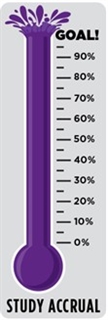 Working under a pandemic-fueled timeline, the CIBMTR and BMT CTN collaborated on a COVID vaccination study to understand whether vaccines are effective in transplant and cellular therapy patients. The study was proposed in January 2021, activated in April 2021, and completed accrual in June 2022. There were 523 patients enrolled, including patients who underwent allogeneic or autologous transplantation or received CAR-T cell therapy.
Working under a pandemic-fueled timeline, the CIBMTR and BMT CTN collaborated on a COVID vaccination study to understand whether vaccines are effective in transplant and cellular therapy patients. The study was proposed in January 2021, activated in April 2021, and completed accrual in June 2022. There were 523 patients enrolled, including patients who underwent allogeneic or autologous transplantation or received CAR-T cell therapy.
The study will analyze markers of both serologic and T cell immune responses and includes a risk factor analysis based on pre-vaccine clinical/demographic characteristics, as well as immunologic characteristics (B and T cells). These results will help the transplant community understand the likelihood of a protective immune response after vaccination in specific groups of patients.
It is a remarkable feat that the study was up and running in 4 months and accrual was completed in 15 months! Thank you to the CIBMTR and BMT CTN team, funding supporters, and participating sites who worked hard to get this study done so quickly. Special thanks to the patients who participated.
New Website and Updated Logo for BMT CTN
By Amy Foley
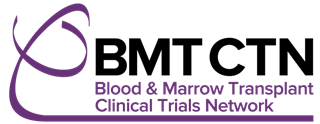
The BMT CTN Data and Coordinating Center (DCC) is pleased to announce the launch of the new and improved BMT CTN website (https://bmtctn.net) and the refreshed BMT CTN logo! The new website consolidates information from the old public BMT CTN website and the private BMT CTN SharePoint website in a more user-friendly layout. Additionally, new content and resources were added to support our wide spectrum of users.
The new BMT CTN logo draws inspiration from the original logo design. The abstract "T" for transplant was carried into the new design, which represents the circle of life with a missing gap. Through multi-institutional clinical trials that evaluate promising cellular therapies, the BMT CTN hopes to provide knowledge to fill this gap and to improve outcomes for patients facing life-threatening disorders. The new logo now also highlights our acronym, BMT CTN, with bold lettering.
About the BMT CTN
The CIBMTR (at both MCW and NMDP) shares administration of the BMT CTN Data and Coordinating Center with other departments of NMDP/Be The Match and with The Emmes Company. Together, these three organizations support all BMT CTN activities.
To get up-to-date information about BMT CTN studies, meetings, and news:
Follow us on Twitter: @BMTCTN
Current HLA typing practices provide patients with safe, effective, and accessible methods for identification of optimal donors for transplant
By Valerie Stewart
The Verifying Accurate Leading-edge IVCT Development (VALID) Act of 2021 aims to amend the US Federal Food, Drug, and Cosmetic Act toward increased regulation of in vitro clinical tests (IVCTs), including those used for infectious disease screening and tissue typing. Under the proposed changes, HLA tests would face increased regulatory scrutiny. If designated a class II medical device, HLA testing required for determining compatibility between donor and recipient would lead to increased user fees and duplicative, burdensome laboratory certification processes that would decrease access to testing and stifle innovation towards the development of new typing methods. Due to its wide-reaching implications, many professional societies have urged Congress to address concerns surrounding this legislation. As an organization with a vested interest in increasing patient access to safe and effective therapies, the NMDP/Be The Match has been actively monitoring the progression of VALID 2021 and has consulted internal subject matter experts to better understand the safety profile of current HLA diagnostic testing to inform their position on this legislation.
To determine the efficacy of test methods currently used by transplant centers and laboratories contracted by Be The Match, the Immunobiology Research team, including Maria Brown and Cynthia-Vierra-Green, was asked to provide information surrounding the likelihood that an HLA testing error could impact a recipient's transplant outcome. To tackle this question, the team's approach was to assess the number of incorrect typing results identified before, at, and after transplant for either donor or recipient, focusing on instances in which the match grade, or degree of similarity between donor and recipient, changed.
The first safeguard against potential typing error is confirmatory typing; performed prior to transplant, confirmatory typing serves both to confirm the identity of the donor and assure the accuracy of HLA typing performed at registration. A key performance indicator for registries, the confirmatory typing discrepancy rate is reported annually to the World Marrow Donor Association (WMDA), the accreditor of international stem cell organizations. Collaborating with Registry Data Quality Specialists, the team demonstrated that the cumulative discrepancy rate for all donors tested in the US was less than 0.4% between 2018 and 2021, exceeding international benchmark standards and attesting to the accuracy of current typing methods. Working with partners within the WMDA, a review of international serious adverse event reports and international surveillance databases demonstrated that between 2012 and 2021 not a single instance of adverse transplant-related event related to HLA typing technical error was reported anywhere in the world.
While these findings are reassuring, the team wanted to dive deeper, exploring the possibility of typing errors going undetected at transplant. To do so, the team leveraged the wealth of HLA sequencing and match grade data contained within the Donor-Recipient Pair Project, a retrospective typing initiative that tests samples obtained from stem cell donors and transplant recipients that have been stored by the NMDP/Be The Match Biorepository. An audit of nearly 16,000 donor / recipient pairs revealed that, although exceedingly rare, instances in which match grade changed due to HLA typing error. While these changes were never detected by the transplant teams, it was fortunately discovered that match-grade deterioration impacted only 0.34% of transplants between 2012 and 2019 (Table 1). Further exploration of the data showed that 71% of cases involved errors in recipient typing, remarkable since recent changes to the NMDP/Be The Match confirmatory typing policy (2021) not only seek to improve the quality of HLA typing but also decrease the number of patient-related discrepancies by changing the sample collection requirement for initial recipient HLA typing. Also noteworthy was the finding that almost one-third of all discrepancies occurred at the DQB1 gene, a low-expression HLA molecule whose impact on transplant outcome is less pronounced than other HLA disparities. This analysis (completed quickly and in response to an urgent need for information) has not only helped to inform NMDP/Be The Match's position on legislation that will have a significant impact on transplant-associated testing, but has also revealed a previously unreported incidence of post-transplant discrepancy, a topic whose further exploration is of interest to the broader transplant community.
Table 1: Post-transplant discrepancy between donor and recipient.
| Year | Number of donor-recipient pairs | Transplants with change in match grade | Transplants with match grade decrease | Proportion (%) of transplants with match grade decrease |
|---|---|---|---|---|
| 2012 | 2064 | 19 | 15 | 0.73% |
| 2013 | 2470 | 12 | 8 | 0.32% |
| 2014 | 2421 | 12 | 6 | 0.25% |
| 2015 | 2551 | 11 | 4 | 0.16% |
| 2016 | 2094 | 8 | 2 | 0.10% |
| 2017 | 1886 | 12 | 11 | 0.58% |
| 2018 | 1555 | 5 | 4 | 0.26% |
| 2019 | 783 | 4 | 4 | 0.51% |
| Total | 15824 | 83 | 54 | 0.34% |
PRO Data Update
The CIBMTR Protocol for Collection of Patient-Reported Outcomes (PRO) Data was recently amended to make the following changes:
- Transitioned Principal Investigator from Bronwen Shaw, MBChB, PhD, to Rachel Cusatis, PhD
- Added sociodemographic and social determinants of health items to the core survey
- Allowed CIBMTR staff to obtain informed consent and collect surveys verbally, by phone
The CIBMTR Survey Research Group approaches patients who have consented to allow the CIBMTR to contact them to enroll in long-term PRO collection. This is a single-center protocol, meaning all research activities are conducted by the CIBMTR. Centers are not directly engaged in any aspect of the research and do not need to submit the protocol to local IRBs or sign any new CIBMTR contracts or riders.
Any adult patient who has consented to the CIBMTR Research Database, agreed to be contacted by the CIBMTR, is seeking or has received a transplant or other cellular therapy at a US center, and is able to consent and complete surveys in English, is eligible for this protocol. We are working to translate all patient materials into Spanish and aim to begin enrolling Spanish-speaking patients this month.
When PRO data are collected, they are added to the CIBMTR Research Database and can be used in any Working Committee or other CIBMTR study. In September, centers will be able to view PRO data for their patients in the DBtC platform, with patient consent. More details will come in the weekly Data Operations Updates.
To avoid duplicating PRO efforts and to make sure we understand unique barriers, we ask centers to agree to allow the CIBMTR to approach their patients for this protocol. This is open to any US center treating adult patients.
Please let us know if we can include your patients! Complete this brief survey to request more information about the protocol and express interest in including your patients! You can also email PRO-Surveys@nmdp.org, with any questions.
Share Your Research
By Jennifer Motl
These new plain-language summaries of CIBMTR research may help your patients:
 |
Blood and marrow transplant can cure sickle cell disease Most people who live for 2 years or longer after their blood or marrow transplant (BMT) are cured of their disease and can expect to live for many more years. Read more: accessible or 1-page version
|
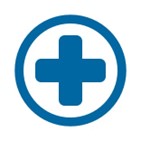 |
Transplant can cure T-cell prolymphocytic leukemia Blood and marrow transplant is an option for some people with rare leukemia Read more: accessible or 1-page version
|
 |
Doctors team up to spot graft-versus-host disease Correct diagnosis is key to helping patients feel better Read more: accessible or 1-page version
|
Find more summaries on the Study Summaries for Patients webpage.
Publicly Available Datasets
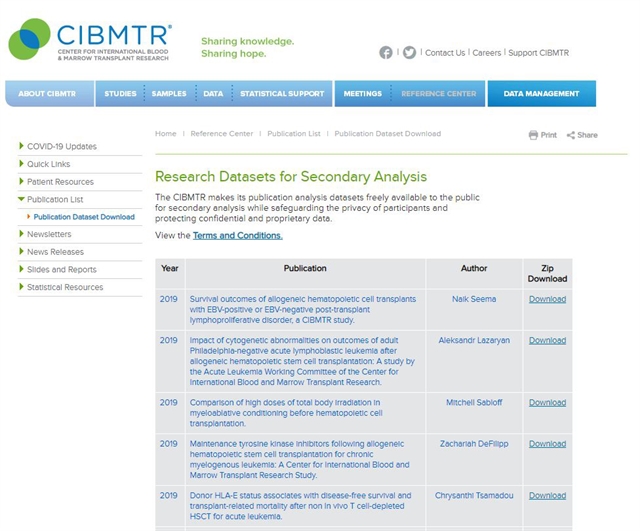
In accordance with the NIH Data Sharing Policy and NCI Cancer Moonshot Public Access and Data Sharing Policy, the CIBMTR makes the final datasets from published studies publicly available on the CIBMTR Research Datasets for Secondary Analysis webpage. These publication analysis datasets are freely available to the public for secondary analysis.
While providing these data, the CIBMTR is committed to safeguarding the privacy of participants and protecting confidential and proprietary data. Upon accessing the datasets page on the CIBMTR public website, the viewer is notified that the dataset was collected by the CIBMTR, and the CIBMTR's supporters are listed. The webpage also clearly notes the terms and conditions of dataset usage.
NEW datasets are now available online.
Our Supporters
The CIBMTR is supported primarily by Public Health Service U24CA076518 from the National Cancer Institute (NCI); the National Heart, Lung and Blood Institute (NHLBI); the National Institute of Allergy and Infectious Diseases (NIAID); U24HL138660 and U24HL157560 from NHLBI and NCI; U24CA233032 from the NCI; OT3HL147741 and U01HL128568 from the NHLBI; HHSH250201700005C, HHSH250201700006C, and HHSH250201700007C from the Health Resources and Services Administration (HRSA); and N00014-20-1-2832 and N00014-21-1-2954 from the Office of Naval Research.
Additional federal support is provided by P01CA111412, R01CA100019, R01CA152108, R01CA218285, R01CA231141, R01CA231838, R01CA262899, R01AI128775, R01AI150999, R01AI158861, R01HL155741, R01HL131731, SC1MC31881, UM1CA121947, U01AI069197, U01AI126612, UG1HL06924.
Support is also provided by Be The Match Foundation; Boston Children's Hospital; Dana Farber; St. Baldrick's Foundation; PBMTF; Stanford University; Medical College of Wisconsin; National Marrow Donor Program; and from the following commercial entities: AbbVie; Actinium Pharmaceuticals, Inc.; Adaptive Biotechnologies Corporation; ADC Therapeutics; Adienne SA; Allogene; Allovir, Inc.; Amgen, Inc.; Anthem; Astellas Pharma US; AstraZeneca; Atara Biotherapeutics; BeiGene; bluebird bio, inc.; Bristol Myers Squibb Co.; CareDx Inc.; CRISPR; CSL Behring; CytoSen Therapeutics, Inc.; Eurofins Viracor, DBA Eurofins Transplant Diagnostics; Fate Therapeutics; Gamida-Cell, Ltd.; Gilead; GlaxoSmithKline; HistoGenetics; Incyte Corporation; Iovance; Janssen Research & Development, LLC; Janssen/Johnson & Johnson; Jasper Therapeutics; Jazz Pharmaceuticals, Inc.; Kadmon, a Sanofi Company; Karius; Kiadis Pharma; Kite, a Gilead Company; Kyowa Kirin; Legend Biotech; Magenta Therapeutics; Mallinckrodt Pharmaceuticals; Medac GmbH; Medexus Pharma; Merck & Co.; Millennium, the Takeda Oncology Co.; Miltenyi Biotec, Inc.; MorphoSys; Novartis Pharmaceuticals Corporation; Omeros Corporation; OptumHealth; Orca Biosystems, Inc.; Ossium Health, Inc.; Pfizer, Inc.; Pharmacyclics, LLC, An AbbVie Company; Priothera; Sanofi; Sanofi-Aventis U.S. Inc.; Sobi, Inc.; Stemcyte; Takeda Pharmaceuticals; Talaris Therapeutics; Terumo Blood and Cell Technologies; TG Therapeutics; Vertex Pharmaceuticals; Xenikos BV.
The views expressed in this newsletter do not reflect the official policy or position of the National Institutes of Health, the Department of the Navy, the Department of Defense, Health Resources and Services Administration (HRSA), or any other agency of the US Government.
The CIBMTR® is a research collaboration between the National Marrow Donor Program (NMDP)/Be The Match and the Medical College of Wisconsin.

